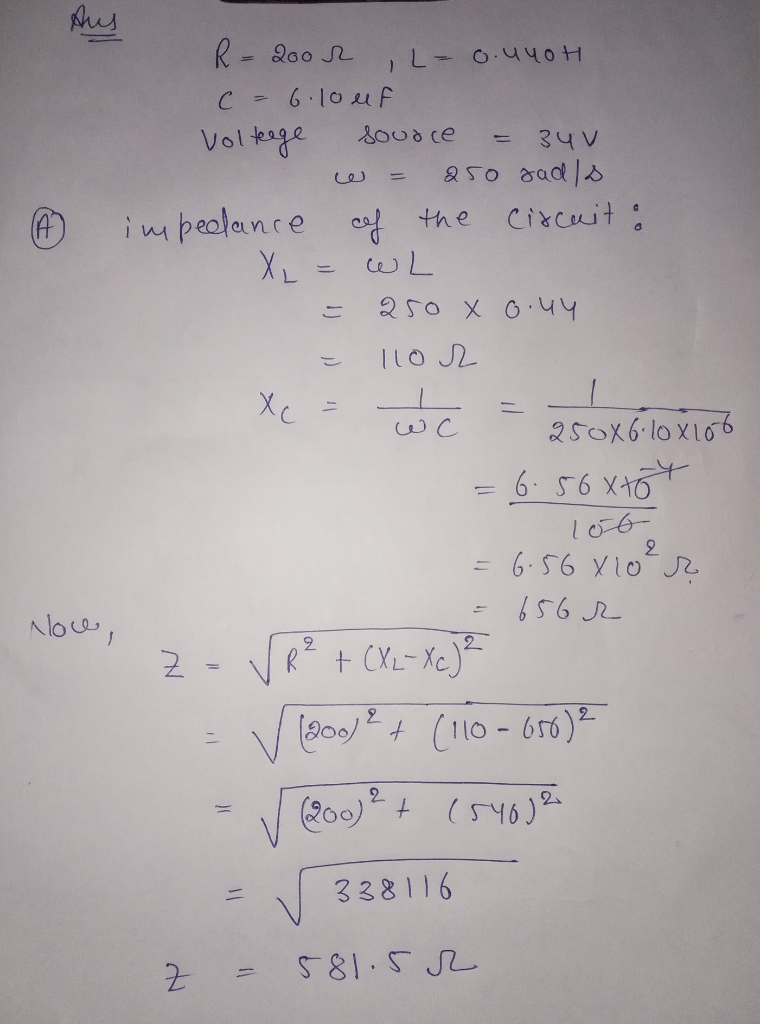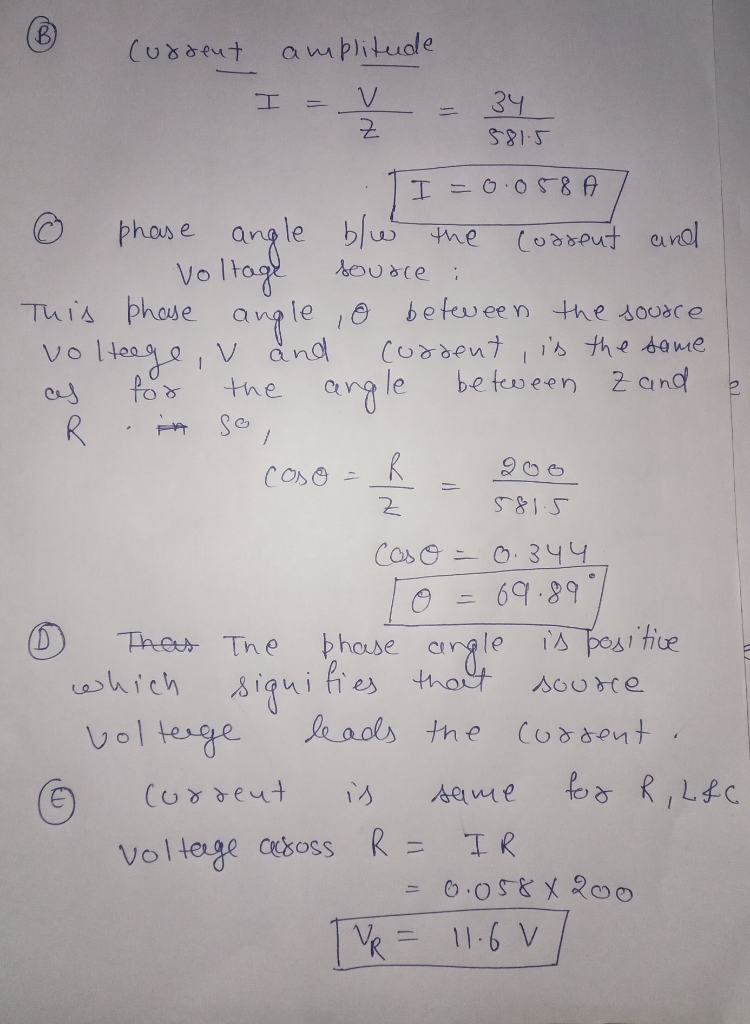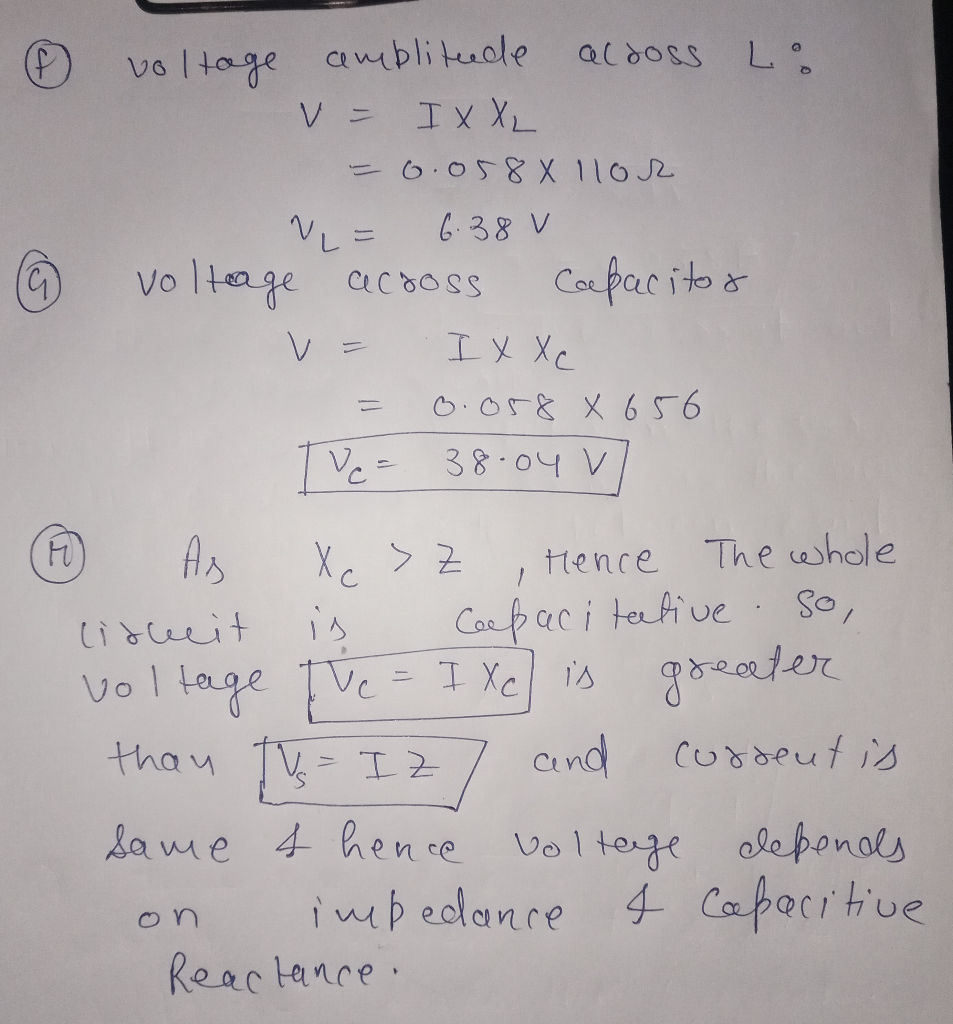Question
In: Physics
You have a resistor of resistance 200 Ω , an inductor of inductance 0.440 H ,...
You have a resistor of resistance 200 Ω , an inductor of inductance 0.440 H , a capacitor of capacitance 6.10 μF and a voltage source that has a voltage amplitude of 34.0 V and an angular frequency of 250 rad/s . The resistor, inductor, capacitor, and voltage source are connected to form an L-R-C series circuit. A-What is the impedance of the circuit? B-What is the current amplitude? C-What is the phase angle of the source voltage with respect to the current? D-Does the source voltage lag or lead the current? E-What is the voltage amplitude across the resistor? F-What is the voltage amplitude across the inductor? G-What is the voltage amplitudes across the capacitor? H- Explain how it is possible for the voltage amplitude across the capacitor to be greater than the voltage amplitude across the source.
Solutions
Related Solutions
You have a resistor of resistance 230 Ω , an inductor of inductance 0.410 H ,...
You have a 200 Ω resistor, a 0.400-H inductor. Suppose you take the resistor and inductor...
A 200 Ω resistor is in series with a 8.50×10−2 H inductor and a 0.540 μF...
A 215 Ω resistor, a 0.900 H inductor, and a 6.50 μF capacitor are connected in...
A 197 Ω resistor, a 0.925 H inductor, and a 5.75 μF capacitor are connected in...
A 190 Ω resistor, a 0.875 H inductor, and a 5.75 μF capacitor are connected in...
A 193 Ω resistor, a 0.750 H inductor, and a 6.00 μF capacitor are connected in...
Suppose an electrical circuit contains a 1 H inductor, a 10 Ω resistor and a capacitor...
An RLC series circuit has a 2.60 Ω resistor, a 200 µH inductor, and an 82.0...
A 10.7-V battery, a 4.98-Ω resistor, and a 10.4-H inductor areconnected in series. After the...
- Bonita Cole Inc. acquired the following assets in January of 2015. Equipment, estimated service life, 5...
- Accoring to the equation: AssO3 + 3C = 3CO +2As the reaction of 1gmol of AssO3...
- Create a program in Visual studio c++ Frank wants to take his wife, son, and daughter...
- Please show Each Formula and Each Step used to obtain the answer(s). How many 18 Watt...
- 1. Draw the money market with the value of money on the vertical axis and the...
- Even organizations as large and successful as State Farm Insurance have to plan for the future....
- Q. WHAT IS THEORY X AND THEORY Y? Q. IF YOU HAD YOUR OWN COMPANY, WOULD...



 genius_generous answered 2 months ago
genius_generous answered 2 months ago